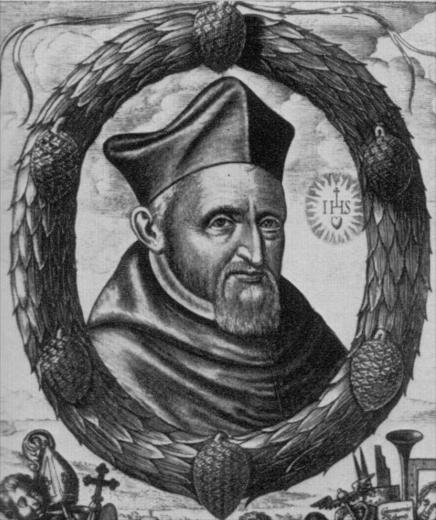i. Ignatius Loyola (1491-1556)
Ignatius Loyola founded the Jesuits in the mid-16th century. The Jesuits led efforts in educational reform and global missions as part of the Counter-Reformation. The Jesuits were charged with teaching nothing in theology contrary to Thomas Aquinas, and nothing in natural science contrary to Aristotle. The cosmic section of Peter Apian, displayed in Music of the Spheres, represents the Aristotelian-Ptolemaic view of the cosmos the Jesuits were charged to uphold. Yet, in practice, things turned out far more complicated.
ii. Robert Bellarmine (1542-1621)
Robert Bellarmine was an eminent Jesuit theologian at the time of Galileo. Even before several remarkable novas appeared, Bellarmine had already come to believe, on the basis of biblical authority, that the heavens are not eternal but corruptible. He came to this conclusion 40 years before Galileo’s observation of sunspots, which seemed to confirm the corruptibility of the heavens. Bellarmine also rejected the idea of solid spheres. He endorsed an ancient Stoic idea that the planets “move through fluid heavens like fish swim through the sea.”
iii. Christoph Clavius (1538-1612)
As noted in the Jesuits in China gallery, by the time of Galileo the Jesuits had become leaders in the mathematical sciences, particularly in astronomy. How did this come to be? That unexpected development was in many ways the lifelong achievement of Christoph Clavius. Because of Clavius, Jesuits were routinely trained in mathematics as part of their religious education.
Clavius died in 1612, shortly after changing his mind because of Galileo’s discoveries. So before Galileo’s first encounter with the Inquisition in 1616, Clavius and other Jesuit astronomers had already conceded that Aristotle and the Ptolemaic system were disproved by Galileo’s telescopic discoveries, and that one of the other systems would need to be adopted.
Related Items
Resource Type:






